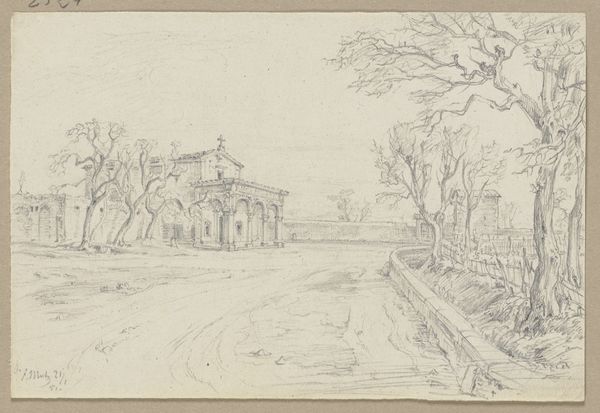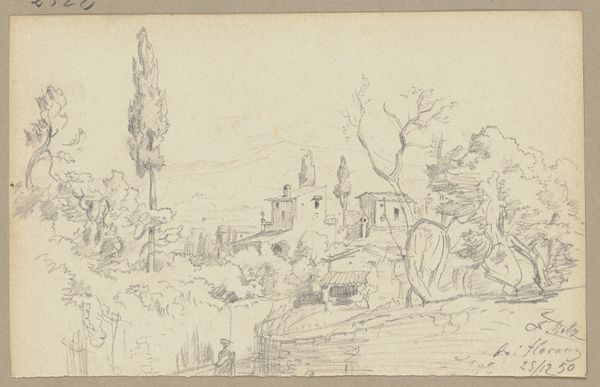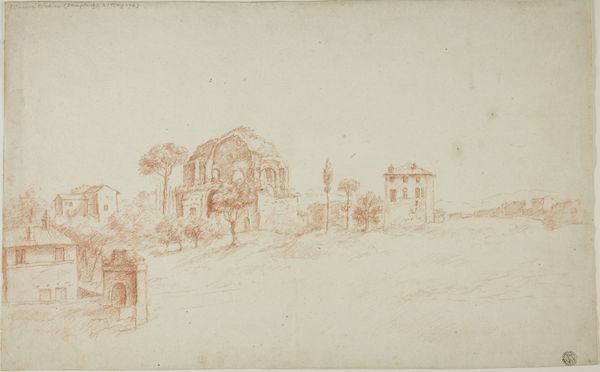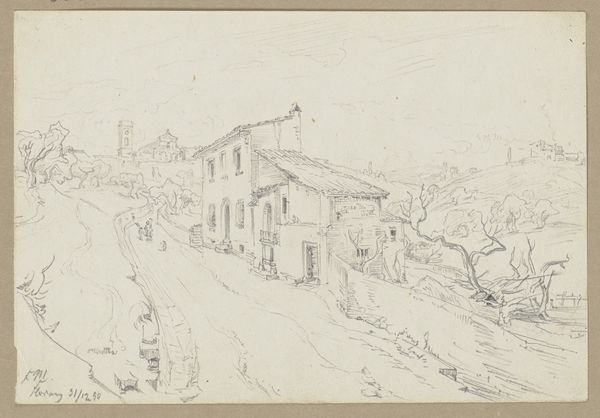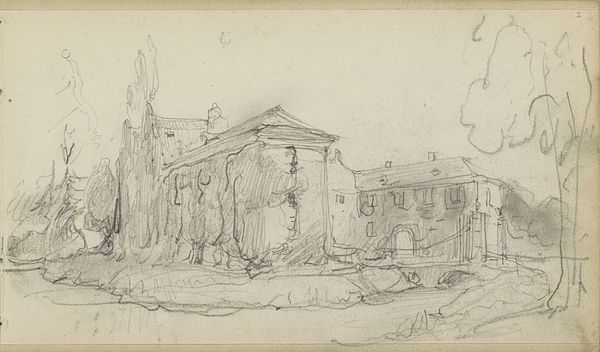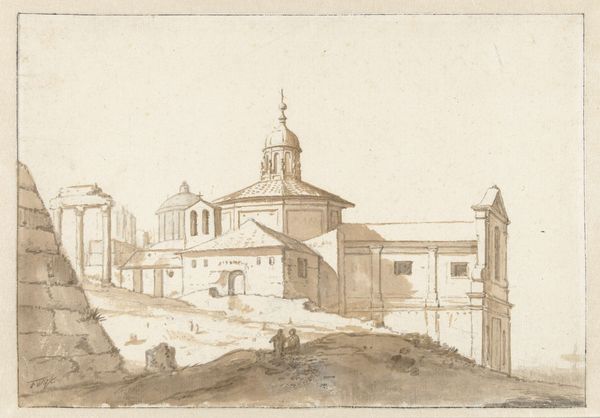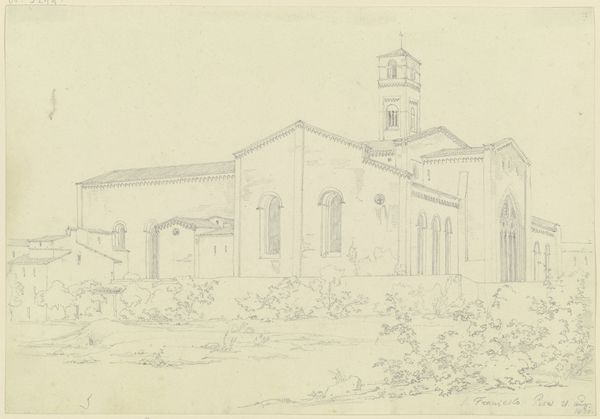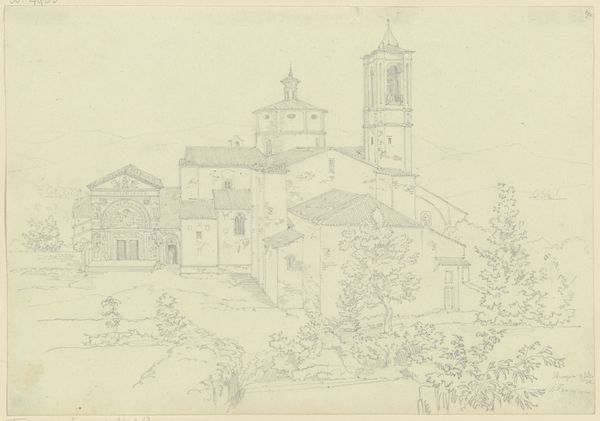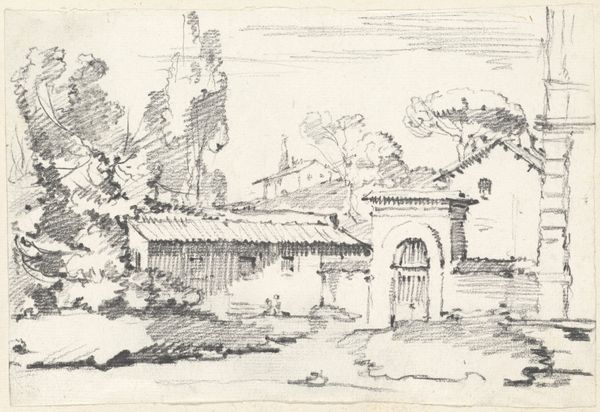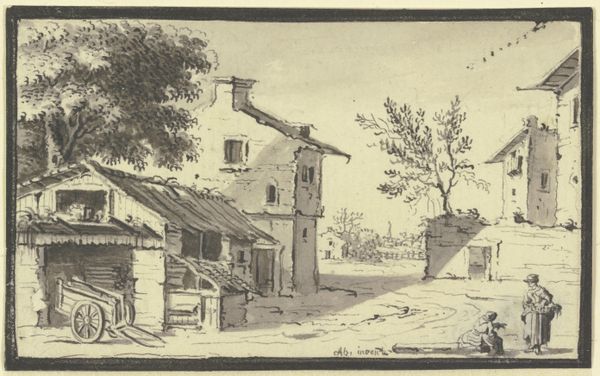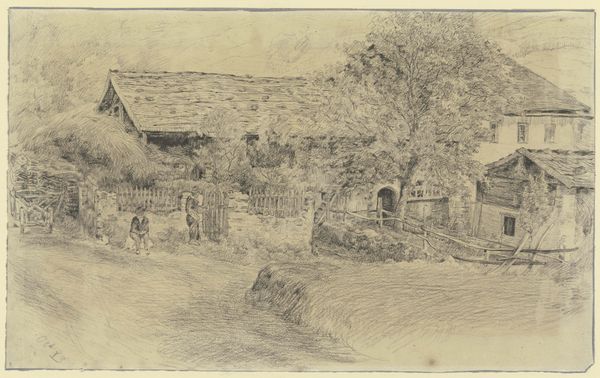
Copyright: Public Domain
Editor: Friedrich Metz’s “Near Fiesole,” a pencil drawing from 1850. There's such quietude in this work, a stillness captured by the pencil's delicate touch. What stands out to you in this piece? Curator: The symbols here, subtle as they are, speak volumes about the cultural memory Metz evokes. Notice the lone figure approaching the chapel; how do you interpret her placement? Is she seeking solace, or does she represent something else? Editor: I hadn't really thought about her as a symbol... Maybe just someone on her way somewhere. Is the chapel a symbol then? Curator: Precisely. The chapel itself, crowned with a cross, acts as a visual anchor. Think about the long tradition of pilgrimage and spiritual journeys embedded in such imagery. Metz, likely drawing from the Romantic tradition, understood the psychological weight these structures carry, reminding us of faith, hope, and mortality. Editor: I can see how the chapel speaks to something bigger than just a building, now that you point it out. What about the overall effect of the landscape, all those soft pencil strokes? Curator: The soft landscape isn't merely background; it reflects an inner world. The Romantic artists often used nature to mirror human emotions. The serenity you noted in your initial impression isn't accidental, it's deliberately constructed through visual symbols to evoke a particular mood – perhaps a longing for a simpler, more spiritual existence. It is interesting how he frames his idea of the landscape on the page. Editor: So it’s like the landscape itself becomes a language? I will definitely look at art differently from now on. Thank you. Curator: Indeed! Each stroke carries the weight of cultural memory. Understanding the language helps us unlock the stories images have been telling for centuries.
Comments
No comments
Be the first to comment and join the conversation on the ultimate creative platform.
